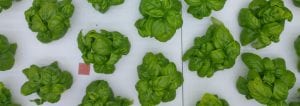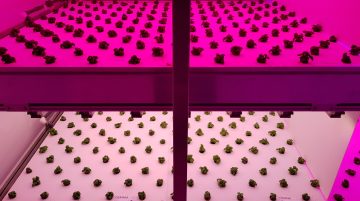Grow light research confirms effect on energy consumption and crop, as experience has shown with other crops
If white light is not strictly necessary in LED installations for grow lights, it is better to avoid it. Compared to red and blue light, it does not add value to the crop, but energy consumption does go up. That’s the conclusion we have drawn after extensive testing with light recipes using the Philips GreenPower LED production module dynamic. The recent results in basil cultivation confirm previous experience in, among others, lettuce, tomato and spinach crops.
There is a lot of talk about the use of white light in LED installations for grow lights. It is more comfortable to work with white light, and you can assess the color of crops better. When people have to work in the crop on a regular basis, a little white light is therefore quite useful at times when there is no daylight available. In other situations, white light does not add any value for the plant, compared to red and blue light, and it only increases costs.








